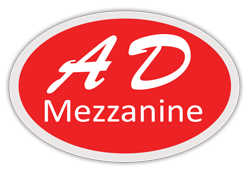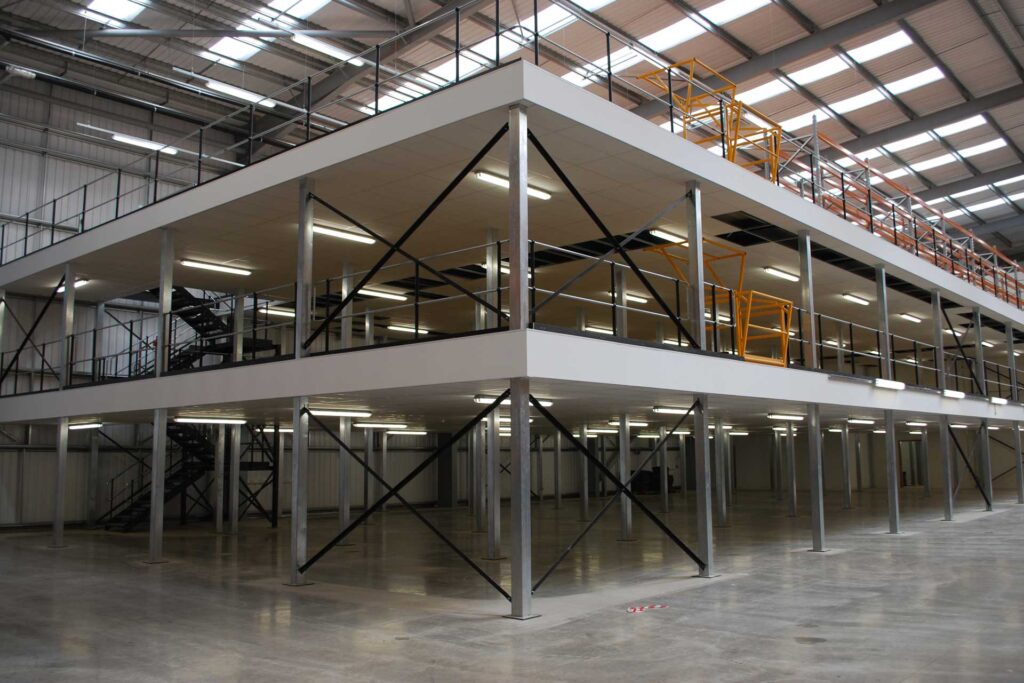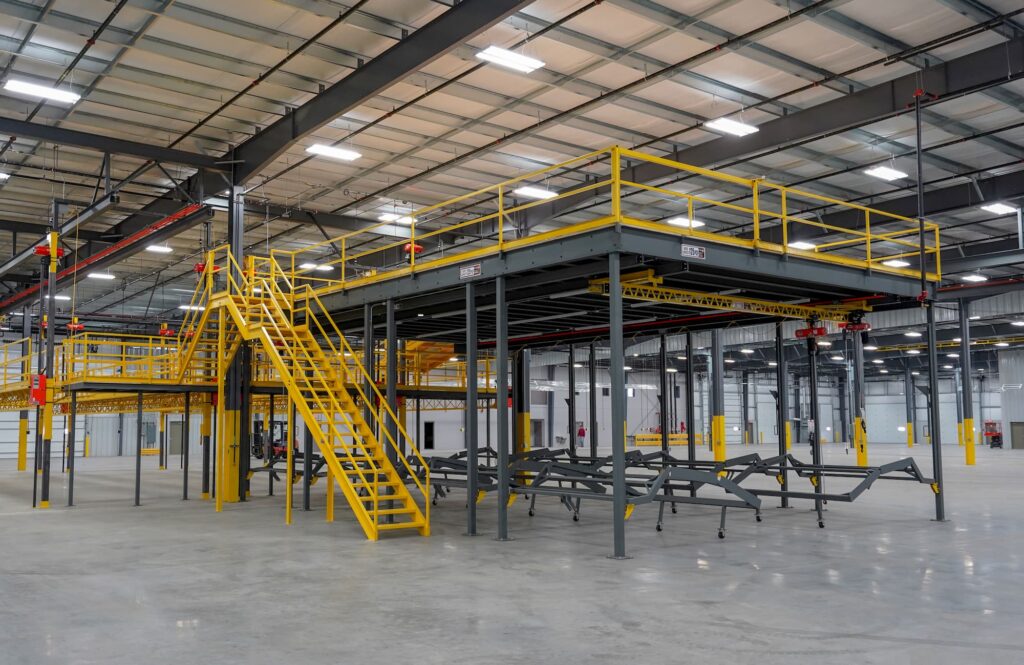In today’s fast-paced industrial landscape, optimizing storage and operational space is crucial for businesses aiming to enhance efficiency and accommodate growth. One of the most effective solutions to achieve this is through the implementation of warehouse mezzanine platforms. These structures capitalize on unused vertical space, providing additional areas for storage, offices, or production without the need for extensive renovations or relocation.
Understanding Warehouse Mezzanine Platforms
A warehouse mezzanine platform is an intermediate floor installed between the main floors of a facility, effectively doubling or tripling the usable space. Constructed from materials like steel, these platforms are designed to support heavy loads and can be customized to fit the specific needs of a business. By integrating mezzanine platforms, companies can significantly increase their operational capacity within the existing footprint of their warehouse.
Benefits of Implementing Mezzanine Platforms
Enhanced Space Utilization
Mezzanine platforms allow businesses to make full use of the vertical space in their warehouses, transforming previously unused areas into functional zones for storage, offices, or production. This approach eliminates the need for building expansions, offering a cost-effective method to increase space.
Cost-Effective Expansion
Compared to the expenses associated with relocating or constructing new facilities, installing a mezzanine platform is a more economical solution. It provides the additional space required to support business growth without the significant costs and disruptions of major construction projects.
Improved Operational Efficiency
By strategically placing mezzanine platforms, businesses can streamline workflows and reduce the time spent moving materials across the warehouse. This optimization leads to increased productivity and a more organized work environment.
Customization and Flexibility
Warehouse mezzanine platforms are highly customizable, allowing businesses to design them according to their specific requirements. Whether the need is for additional storage, office space, or production areas, mezzanines can be tailored to meet these demands effectively.
Common Applications of Mezzanine Platforms
Storage Expansion
Businesses often use mezzanine platforms to increase storage capacity, accommodating growing inventory levels without the need for external storage solutions. This expansion is particularly beneficial for warehouses with limited floor space.
Office Space Creation
Mezzanines can serve as elevated office spaces within the warehouse, providing supervisors and managers with a vantage point to oversee operations while remaining close to the production floor.
Production and Assembly Areas
For manufacturing facilities, mezzanine platforms offer additional areas for production and assembly lines, enabling businesses to increase output without expanding their building’s footprint.
Types of Warehouse Mezzanine Platforms
Freestanding Mezzanines
Also known as structural mezzanines, these are independent structures that do not rely on existing shelving or racks for support. They offer maximum flexibility and can be relocated or reconfigured as needed.
Rack-Supported Mezzanines
These mezzanines are built upon existing pallet rack systems, combining storage and mezzanine space. This design is ideal for warehouses looking to optimize storage density and accessibility.
Shelving-Supported Mezzanines
Utilizing existing shelving units as the base, these mezzanines are suitable for storing smaller items and are commonly used in retail and e-commerce warehouses.
Key Considerations for Mezzanine Installation
Structural Integrity
It’s essential to ensure that the existing building structure can support the additional load imposed by a mezzanine platform. A thorough assessment by structural engineers is recommended before installation.
Compliance with Regulations
Mezzanine installations must adhere to local building codes and safety regulations. This compliance includes considerations for load capacity, fire safety, and accessibility.
Safety Features
Incorporating safety elements such as guardrails, handrails, and anti-slip surfaces is crucial to protect employees working on and around the mezzanine platform.
Integrating Mezzanine Platforms with Existing Systems
To maximize the benefits of mezzanine platforms, it’s important to integrate them seamlessly with existing warehouse systems. This integration may involve aligning with current material handling equipment, ensuring compatibility with inventory management systems, and maintaining clear pathways for efficient movement.
Conclusion
Implementing warehouse mezzanine platforms is a strategic approach to optimizing space, enhancing efficiency, and supporting business growth. By utilizing vertical space effectively, businesses can achieve their expansion goals without the need for costly and disruptive construction projects.
With over 20 years of experience, A D Mezzanine Inc. is your trusted partner for innovative space optimization solutions in the Greater Toronto Area. We specialize in designing, supplying, and installing high-quality industrial mezzanines, storage lockers, bike racks, wire mesh partitions, wire machine guards, bollards, rack protectors, safety curbs, and guardrails. Our tailored solutions help businesses in Mississauga, Toronto, Brampton, and across Ontario maximize their existing spaces without the need for costly expansions. Committed to quality and durability, our products meet the highest standards, enhancing both industrial and residential environments.
Ready to transform your space?
Contact A D Mezzanine Inc. today to discuss your storage needs and discover how our solutions can benefit your business.



